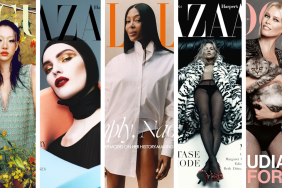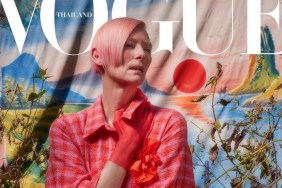
Shows like America’s Next Top Model make it all seem so simple: if you are tall and pretty, fame and the exciting model lifestyle are surely just around the corner.
In the late 1970’s through the 90’s, supermodel Coco Mitchell was one of those lithe, young women who lived the glamorous life, and ruled in print and on the runway.
But for Mitchell and other top models, there were some necessary steps to make that jump from aspiring model to model of choice.
Coco Mitchell generously shared her insights with the Fashion Spot about what it takes to make it in an industry that is always looking for the next, sweet young thing.

You can go to sites like Style.com and Videofashiondaily.com, and look at runway shows. Everyone has digital cameras now, so do a model test on yourself, and learn your angles.
Modeling is so much more than looking cute. Agencies just don’t have time for uninformed people.
tFS: This industry is obsessed with youth, but you started modeling in your early twenties. What advice would you give someone who is a bit older?
CM: I was in my mid-twenties when I started, but I looked 18. So, on one level, it is about photographing young. If you are an older girl starting out, it is probably best to begin in Europe, then come back to the States with a fierce portfolio.
tFS: How does a girl move up from a second-tier or third-tier agency to a top agency?
CM: You should always aim for the top agencies, and if you can’t sign with a top agency initially, you should try to develop a good book by doing test shots with photographers, so that a top agency will sign you.

I was well paid to do catalog work for Avon, which was shot over a two-week period in the Caribbean.
There are models who are paid well to do small shows for buyers. There are three seasons in fashion, Fall/Winter, Spring/Summer and Resort. If you can do that for four or five designers for all three seasons, you can make a pretty penny. In the 90’s, a lot of the Russian models did that.
There are also models that only do fittings. Now, that is hard work because you are working very long days. I did fittings for Ralph Rucci, but it worked for me because I have lots of energy. However, if you are working for more than one designer, it can be really exhausting. There are models clocking six figures doing fittings.
tFS: Once a model is signed with a top agency, what are the financial rewards the first season out?
CM: A lot of girls with top agencies don’t make any money at first. It depends a lot on your portfolio. Your first year signed should focus mostly on you getting a good book.
A lot of people don’t realize that some designers don’t pay new models. But if you are new to the industry, you should never turn down an opportunity to work with a top designer, even if you are not being paid. An editor may see you walk in a show, and decide to use you for an editorial spread.
tFS: How is the industry now responding to ethnic models?
CM: Now that we have Michelle Obama, a woman of color who loves fashion, as our First Lady, agencies are really paying more attention to ethnic models.
tFS: You spoke to me once about models not having full-time jobs outside of the industry. Could you speak about that?
CM: You can’t go on castings if you have a 9 to 5, or look fresh if you have been working all night. You cannot model part-time and expect to get anywhere.
I had no money, nor was I signed with an agency when I moved to California to do print work. I swept up hair in a beauty salon to get by until I was signed. Nothing should interfere with your ultimate goal of being a full-time model.
tFS: How do you help aspiring models?
CM: I tell them the truth about this industry, and I give my perspective on what fashion is about, and how a young model can progress her career. A model has to be prepared for opportunities, and that entails doing more than looking up a few things on the internet, and posing in front of the mirror.






